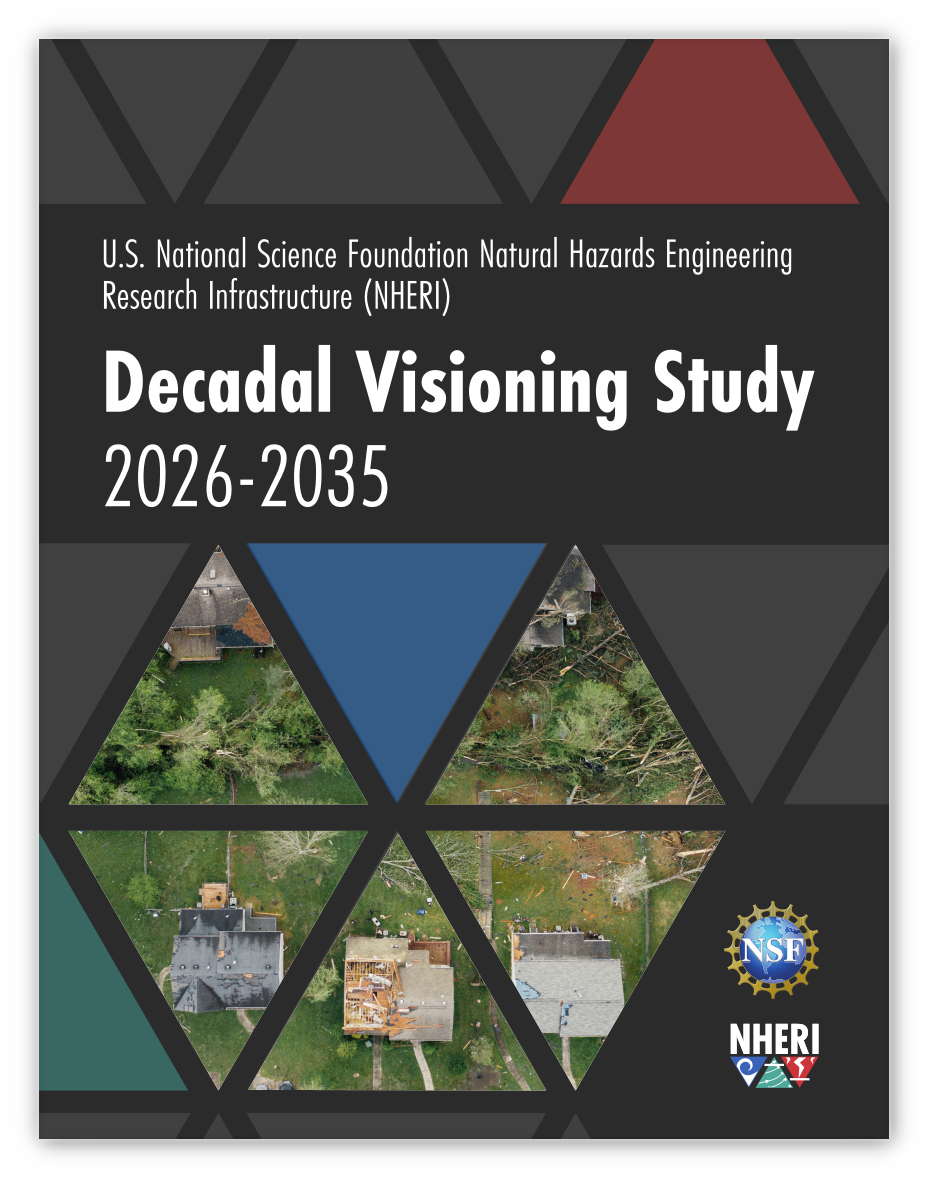FOR IMMEDIATE RELEASE
NHERI Decadal Visioning Study 2026-2035
April 26, 2024 – Washington, D.C. — A new report provides the natural hazards engineering research community with emerging research and collaboration needs for improving the sustainability and resilience of civil infrastructure to natural hazard events, including wildfires, earthquakes, flooding, and other severe weather that can result in costly damage and loss of life. Researched and developed by Nexight Group, with funding from the U.S. National Science Foundation (Award # 2227014), this report complements the recent NHERI Science Plan.
The NSF NHERI Decadal Visioning Study 2026-2035 outlines not only the engineering research needs for improving the sustainability and resilience of the nation’s civil infrastructure but also the experimental and field research infrastructure, both physical and cyber, and tools needed to continue this critical hazard research. Additionally, the study identifies a variety of focus areas and collaboration opportunities across the hazards community.
“NSF invests in research infrastructure to enable the community to explore the frontiers of science and engineering and address the challenges faced by our nation,” said Daniel Linzell, division director for the NSF Division of Civil, Mechanical and Manufacturing Innovation. “NSF seeks ideas through studies like this and other methods to help ensure our natural hazards research investments strategically address research community and national needs.”
Nexight Group – a Maryland-based consulting firm that specializes in facilitating effective collaboration across government, industry, academia, and non-profits — developed the study with support and guidance from a task group of 42 natural hazards engineering researchers, as well as input from other experts from industries focused on hazard mitigation.
Learn more about the development of the NHERI Decadal Visioning Study at the 2024 Natural Hazards Research Summit on May 14th and 15th in College Park, Maryland.






